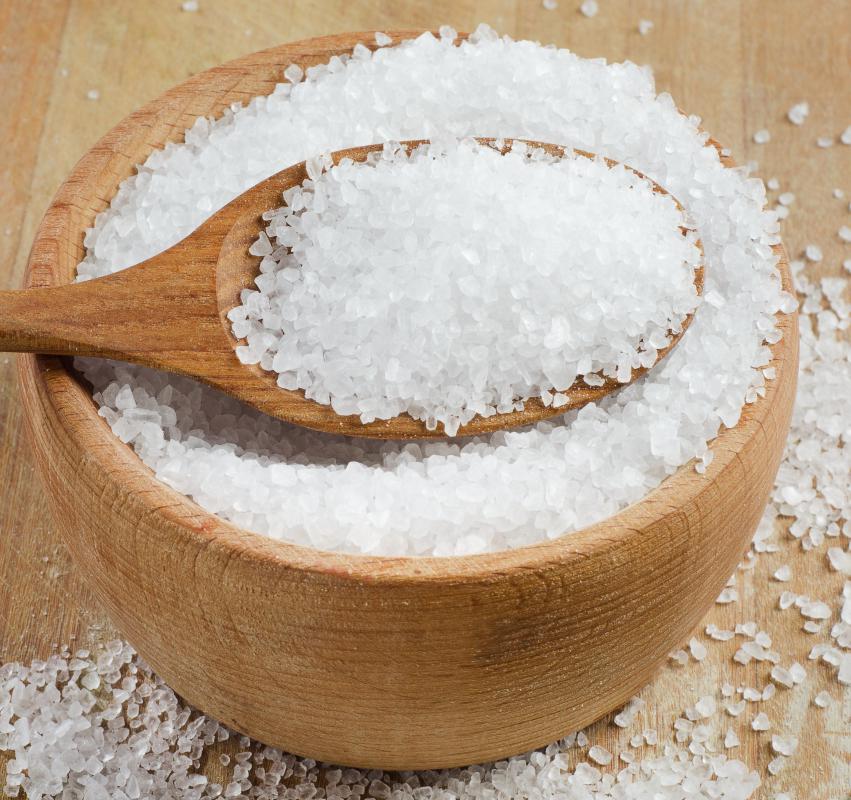At WiseGEEK, we're committed to delivering accurate, trustworthy information. Our expert-authored content is rigorously fact-checked and sourced from credible authorities. Discover how we uphold the highest standards in providing you with reliable knowledge.
What is a Salt Cure?
Fresh meats have a very limited shelf life: they must remain refrigerated or frozen until cooked, and even then, they must be consumed quickly to avoid bacterial growth. One way to extend the longevity of meats is to cure them with a salt cure. A salt cure is a process through which meat is preserved. Salt cures can either be salt rubs or brining solutions that alter the chemical composition of the meat, tenderize it, and dry it. Cured meat does not require refrigeration, and remains edible for months or even years after curing.
Salt cures are an ancient method of food preparation practiced by many cultures, and the process is still performed in the modern day. Meat curing was particularly important before refrigeration was widely available. In Medieval Europe, for instance, meats were often kept cool in underground caverns, but this practice was not always sustainable. Meat mongers began curing excess meat and meat to be consumed in the winter months in salt to keep it from decomposing. Fishermen, particularly those in Scandinavia, developed salt cure processes to preserve fish around the same time.

An early salt cure was as simple as storing slabs of meat in a barrel of salt. Chemicals in the salt dry the meat by wicking out moisture. This eliminates the chance for bacterial growth. Bacteria thrive in moist environments, but most cannot tolerate high concentrations of salt.
Meat was commonly stored in salt barrels on early ship explorations, including European trading vessels and the British sea voyages that landed settlers in the United States, Canada, and Australia. The ships were gone for months at a time without the ability to procure fresh food, or keep stored food refrigerated. Salt-cured meat, including cured poultry, pork, fish, and beef, was a staple of early ship life.

How long meat must stay in the salt cure before it is preserved is largely a matter of what kind of meat it is, its size, and the potency and concentration of the salt. Curing can take anywhere from a few days to a few weeks. The length of time a piece of meat remains in the salt cure can also affect its taste. Cured meat has, perhaps not surprisingly, a very salty flavor, but how much that flavor overpowers the original flavor of the meat varies with time.

Brining is another variation of salt cure. Brine is a saltwater solution in which meats are submerged. If left long enough, a brining solution will preserve meat in much the way that a direct application of salt will. Brining requires refrigeration, however, as the water in the brine will breed bacteria if left too long at room temperature.
Cured meats remain, an important part of many cultures' culinary traditions, although the methods of salt cure have advanced from early times. More sanitary curing containers have largely replaced wooden barrels, and chemicals such as nitrate and nitrite are frequently added to curing salts to speed the process and to ensure that meats are completely dried and preserved.

Home curing is also a popular way of either preserving or flavoring meats, particularly poultry and pork. Home cooks should be cautious of simply using table salt to preserve meat, however. Many of the table salts that are commercially available do not have the same potency or composition as salts had in the Middle Ages. A salt cure made with ordinary table salt may not actually cure meat. Many companies sell curing solutions and curing kits that are generally a safer option. These cures can either completely preserve meat, or, if left to cure for a shorter time, tenderize the meat and add flavor before cooking. Partial cures are a relatively easy way to enhance the flavor of meat destined for the frying pan or baking tray.
AS FEATURED ON:
AS FEATURED ON:














Discuss this Article
Post your comments